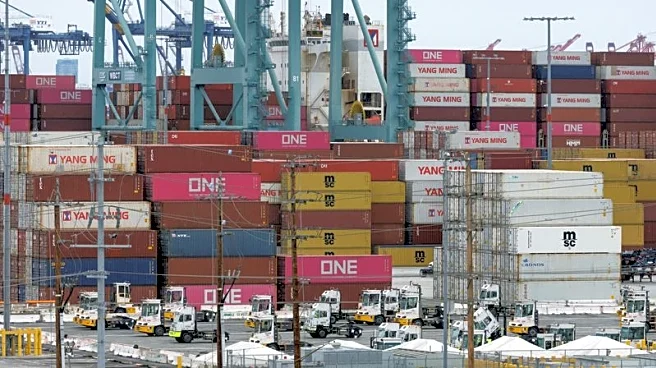What's Happening?
The Global Manufacturing PMI, sponsored by J.P. Morgan and compiled by S&P Global Market Intelligence, indicated a slight slowdown in global factory expansion in September, with the PMI registering 50.8, down from 50.9 in August. Despite improvements in manufacturing conditions, the increase in new orders and production was insufficient to boost staffing levels, leading to a marginal drop in employment. The report highlighted varied regional performances, with strong expansions in India and Thailand contrasting with sharp downturns in Taiwan, Russia, Brazil, and the UK. The US saw reduced production growth, influenced by tariffs that temporarily buoyed production and exports. Price pressures moderated globally, with increased discounting evident.
Why It's Important?
The report underscores the ongoing challenges in the global manufacturing sector, with implications for economic stakeholders worldwide. The mixed regional trends reflect the impact of geopolitical factors, such as US tariffs, which have temporarily boosted US production but may lead to a cooling effect in the coming months. The moderation in price pressures and employment levels suggests persistent excess capacity relative to demand, which could affect global supply chains and economic growth. Businesses and policymakers must navigate these complexities to maintain competitiveness and adapt to shifting market dynamics.
What's Next?
As the global manufacturing sector faces these challenges, stakeholders may need to reassess strategies to mitigate risks associated with geopolitical volatility and fluctuating demand. The anticipated payback from tariff-related expansions could lead to adjustments in production and export strategies, particularly for US and European economies. Monitoring regional performances and adapting to changing conditions will be crucial for maintaining stability and growth in the sector.
Beyond the Headlines
The report highlights the interconnected nature of global manufacturing trends, with implications for trade policies and economic strategies. The divergence in regional performances may prompt discussions on the effectiveness of tariffs and other trade measures, as well as the need for diversified supply chains to enhance resilience. The moderation in price pressures could also influence inflationary trends and consumer spending patterns, affecting broader economic indicators.











